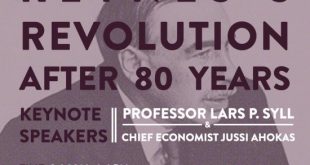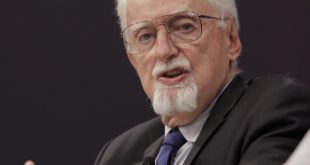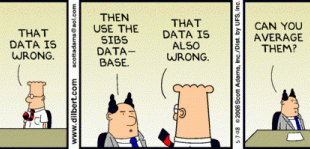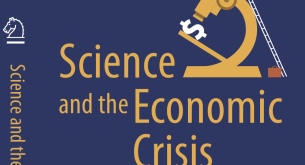Taking part of the debate on microfoundations among macroeconomists these days, I wonder if Heinz-Peter Spahn isn’t more on the right track than those who desperately offer more or less contrived defenses of the microfoundationalist programme: The crucial point however is: market conditions, which are presupposed in the model of intertemporal choice, are not given in reality. Distributing consumption optimally over time depends on the possibility of individuals to lend money on their...
Read More »The money multiplier – neat, plausible, and utterly wrong
The money multiplier – neat, plausible, and utterly wrong The neoclassical textbook concept of money multiplier assumes that banks automatically expand the credit money supply to a multiple of their aggregate reserves. If the required currency-deposit reserve ratio is 5%, the money supply should be about twenty times larger than the aggregate reserves of banks. In this way the money multiplier concept assumes that the central bank controls the money supply by setting the required reserve...
Read More »Keynes’s revolution
A small ray of hope
A small ray of hope I overheard a conversation between two high school students this morning. The first person was asking about which classes the second was going to take next. One of those mentioned was microeconomics. “Oh, that’s easy” said the first, “You just have to remember that it’s all rubbish – they want you to believe that people are rational, and that there’s all this perfection in the world.” “Really?” responded the second, “That’s really dumb. I wonder why they do that?” “It...
Read More »Long run demand effects
Long run demand effects In the standard mainstream economic analysis — take a quick look in e.g. Mankiw’s or Krugman’s textbooks — a demand expansion may very well raise measured productivity in the short run. But in the long run, expansionary demand policy measures cannot lead to sustained higher productivity and output levels. In some non-standard heterodox analyses, however, labour productivity growth is often described as a function of output growth. The rate of technical progress...
Read More »Axel Leijonhufvud on the road not taken
Axel Leijonhufvud on the road not taken The orthodox Keynesianism of the time did have a theoretical explanation for recessions and depressions. Proponents saw the economy as a self-regulating machine in which individual decisions typically lead to a situation of full employment and healthy growth. The primary reason for periods of recession and depression was because wages did not fall quickly enough. If wages could fall rapidly and extensively enough, then the economy would absorb the...
Read More »Macroeconomic just-so stories you really do not want to buy
Macroeconomic just-so stories you really do not want to buy Thus your standard New Keynesian model will use Calvo pricing and model the current inflation rate as tightly coupled to the present value of expected future output gaps. Is this a requirement anyone really wants to put on the model intended to help us understand the world that actually exists out there? Thus your standard New Keynesian model will calculate the expected path of consumption as the solution to some Euler equation...
Read More »The real tail wagging
The real tail wagging Keynes’s intellectual revolution was to shift economists from thinking normally in terms of a model of reality in which a dog called savings wagged his tail labelled investment to thinking in terms of a model in which a dog called investment wagged his tail labelled savings James Meade
Read More »Pitfalls of meta-analysis
Including all relevant material – good, bad, and indifferent – in meta-analysis admits the subjective judgments that meta-analysis was designed to avoid. Several problems arise in meta-analysis: regressions are often non -linear; effects are often multivariate rather than univariate; coverage can be restricted; bad studies may be included; the data summarised may not be homogeneous; grouping different causal factors may lead to meaningless estimates of effects; and the theory-directed...
Read More »Physics and economics
From the times of Galileo and Newton, physicists have learned not to confuse what is happening in the model with what instead is happening in reality. Physical models are compared with observations to prove if they are able to provide precise explanations … Can one argue that the use of mathematics in neoclassical economics serves similar purposes? … Gillies‘s conclusion is that, while in physics mathematics was used to obtain precise explanations and successful predictions, one cannot...
Read More »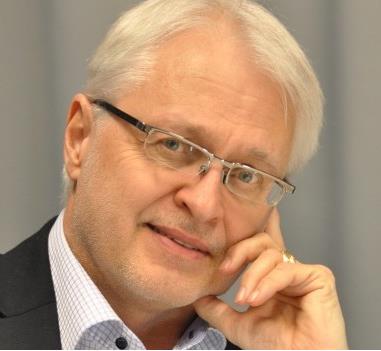 Lars P. Syll
Lars P. Syll



